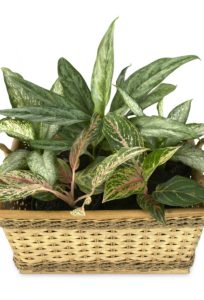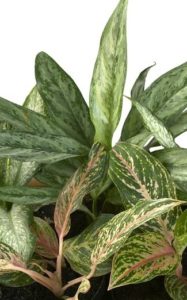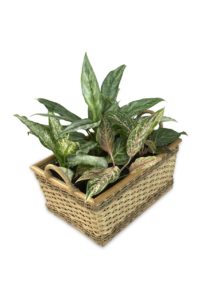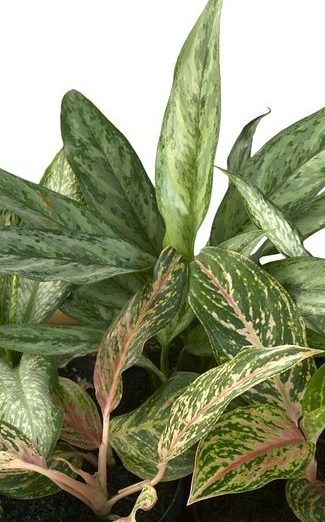Some links in the post are affiliate links and I get a commission from purchases made through some links found in the post.
Some people shy away from growing houseplants because they are afraid of killing them or having diseased-looking plants in their homes.
If this describes you, maybe the dieffenbachia could be a safe alternative for you.
Not only does it add some greenery to your space, thus giving it an aesthetic facelift, but it also cleans the air in your home. Plus, it is one of the easiest plants to grow!
While caring for a dieffenbachia should be fairly easy, some people report experiencing problems at different stages of the plant’s growth.
The best way to handle a plant is to understand its growing requirements, as we will cover in this article.
You can use these as a guide each time something does not look right.
For example, if you notice that your plant’s leaves have yellowed, you can check your watering rates, lighting in the space, and other factors that may have affected it.
That is the trick to growing dieffenbachia and any other plants. To get it right, you must first understand the plant as we will see in this piece.
Dieffenbachia Care Instructions
Instead of diving right into the common dieffenbachia problems and how you can fix them, we will start with the care guide.
From this, you can look at what problem you are facing and try to see if better care might be the solution. Are you ready? Here goes:
Dieffenbachia Blooming
 Everyone wants a plant that adds radiance to space as opposed to being an eyesore in the corner of the room.
Everyone wants a plant that adds radiance to space as opposed to being an eyesore in the corner of the room.
For your dieffenbachia to exude this, you need to ensure it has access to bright and indirect light. Did you notice the indirect part?
Many people make the mistake of assuming that because a plant needs light, it would do well in the sun.
But that is not the case. If anything, your plant may start wilting and changing its appearance because of this direct exposure.
You should thus place the plant near a sunny window that does not get direct sun. It may seem like a bit of a conundrum, but you will get it right soon enough.
You may even have to use blinds (yes, it’s that important!) Where natural light is not available, you can always use artificial lighting. See? Problem solved!
Dieffenbachia Watering
How many times have you heard someone say that their plant is doing badly owing to overwatering? Overwatering is a leading cause of houseplants’ deaths.
As much as not watering them enough can kill them, it does not damage them as much as too much water. There is a thing such as too much love.
So, what happens when you overwater your dieffenbachia? Well, the roots sit in that water for way longer than they should, prompting root rot, nutrient leaching, and a bunch of other downsides.
To avoid this, you should always check the soil before adding water to the pot. It can be quite tempting to splash some water on the topsoil the minute it looks dry.
However, a dry surface is not indicative of the soil being dry inches below.
Instead of going by your gut feeling, you should stick your finger into the soil to a depth of at least one inch. If it feels damp to the touch, you can postpone the watering.
If it feels slightly dry, you can add some water.The goal here is to avoid waterlogging.
At the same time, you should not allow the soil to completely dry out before adding water as this would affect the uptake of nutrients.
It’s all about balance with this plant. It should come easy to you after a while as you can gauge when the soil will be ready for more water.
When watering, ensure that you soak through the soil until you see water coming out of the drainage holes.
Allow the water to drain before placing the pot back on its tray. Under no circumstances should you allow the plant roots to sit in water, as this would only pave the way for root rot.
Some people struggle with watering. If you have a hard time gauging watering times and often kill your plants with water, you might benefit from using a soil moisture gauge.
It will help you avoid overwatering or underwatering the plant, with the latter being almost as dangerous as the first.
What about humidity? Should you have any concerns about it? Generally, your plant will adapt to the conditions in your home.
However, the humidity levels may fall to the point that negatively affects your plant. You can see this effect in the form of browning leaves, edges, and tips.
Once you ascertain that the change has nothing to do with other possible causes, you can try using a humidifier to see if anything changes.
Dieffenbachia Lighting
 Direct sun exposure causes dieffenbachia leaves to fade or burn. As a result, you may feel tempted to keep the plant in low lighting.
Direct sun exposure causes dieffenbachia leaves to fade or burn. As a result, you may feel tempted to keep the plant in low lighting.
In this case, the plant would grow quite leggy, taking away from its bushy appeal. It is advisable to supplement the lighting in low-light conditions; else, the plant will grow tall.
Where you notice the plant seems to be leaning on one side, rotate it so that the other side can get some light as well. If you can do this every two weeks, the plant should grow healthy and strong.
Dieffenbachia Soil
As long as you choose a well-draining and aerated potting mix, the plant will do well.
If you notice that the soil does not drain well or you have a tendency to overwater, you can make up for this by adding coarse sand to the soil.
Alternatively, you can work with perlite and pumice to increase the draining capacity of the soil. All of this work would be in vain if the pot did not have adequate drainage holes.
As such, also look into this and ensure that you do not place the pot on its tray before water finishes draining.
Dieffenbachia Repotting
You will repot your plant a few times during its growth phase, but this is only necessary when its roots become root-bound.
You must realize that repotting stresses the plant and it can even go into transplant shock. Thus, the fewer times you introduce it to a new environment, the better it will thrive.
Do not make the mistake of repotting a plant that is already in poor health, unless its poor health owes to its roots being root-bound.
So, how can you know it’s time to repot your plant? Simple- by looking at the bottom holes!
If you notice some roots coming out from the drainage holes, that’s an indication that the plant needs more space.
Also, you can look at the number of roots in the container. If they seem to be more than the soil in the container, that’s a good reason as any to change the pot.
Failure to do this would lead to the soil drying out faster than average, causing the plant to wilt.
Another indication would be roots circling the bottom of the container for lack of room into which they can grow.
When moving up pot sizes, aim for one or two pot sizes ahead, but not more than this. Why?
Well, your plant will focus on filling the pot, which strains it and causes its health to suffer as it tries to keep up with the huge space.
For example, when working with a 10-inch pot, you can opt for a 12-inch pot. If you must go bigger than this, opt for 14 inches.
Dieffenbachia Fertilizing
Does your plant need fertilizer? Probably not. With a good potting mix, you can bypass the need for inputs.
However, if you feel the need to use one, you should opt for organic types as these put less strain on the plant.
Feeding should take place during spring or summer when the plant is actively growing.
Once it goes into a dormant state, you need to take a step back and cut back on feeding and watering.
Too much fertilization can turn the plant brown, which is a common effect of using chemical inputs.
Dieffenbachia Pest Infestation
 While pest attacks are not common, you cannot rule them out altogether. Common pest problems for a dieffenbachia include spider mite and mealybug attacks.
While pest attacks are not common, you cannot rule them out altogether. Common pest problems for a dieffenbachia include spider mite and mealybug attacks.
These present in the form of webbing or white cotton, respectively. Upon noticing signs of an attack, you should try and address the problem using organic approaches.
Not only are these effective, but plants also do not develop a tolerance to these as they would with chemicals.
If you are enjoying this article, check out our article on why are my calathea ornata leaves curling.
Common Dieffenbachia Problems
Now that you have a general idea of how you can care for your dieffenbachia, let’s have a look at some problems you may encounter.
We will solve them using the care instructions we earlier covered:
Dieffenbachia Problems: Yellow Leaves
For a plant praised for its greenery, it can be quite disappointing to see your dieffenbachia turning yellow or brown.
Now, here is the thing. Aging is a natural part of plant growth. If the leaves appear brown or yellow at the bottom of the plant, aging is highly likely to blame for this change.
In this case, you can wait for the leaves to fall off the plant or you can trim them.
However, if the browning and yellowing are also present on the upper levels, your plant may be overwatered, infested with bugs, root-bound, or may not be getting enough light.
Dieffenbachia Problems: Browning Leaf Tips and Edges
The possible causes for this are underwatering, low humidity, a mineral build-up in the soil, and using too much fertilizer.
To counter the fertilizer effect, you can try using organic inputs and rainwater/ filtered water.
If this does not work, you may need to look into the humidity levels in your home or question the amount of water fed to the plant.
Dieffenbachia Problems: Brown Spotting on Leaves
If you notice this, you have three likely culprits.
One would be exposure to heat or direct sun, the other would be exposure to freezing temperatures such as being near a cold window and the last would be a pest infestation.
By ruling out or confirming any of the causes, you should have an easy time narrowing down to the culprit.
Dieffenbachia Problems: Droopy Leaves
Poor watering is the most likely cause of your dieffenbachia leaves drooping; you could either be overwatering or underwatering the plant.
Additionally, the plant may have been exposed to cold or heat and pests. Another option to consider would be transplant shock.
In the case of the latter, allow the plant time to adapt to the new conditions, which should be a couple of weeks.
Dieffenbachia Problems: Curled Leaves
Pests are often to blame for your dieffenbachia leaves curling, e.g., spider mites. If not, you could have used too much fertilizer, underwatered the plant, or exposed it to hot or cold environments.
Dieffenbachia Problems: Leggy Growth
While you may not know this, legginess is common with dieffenbachia plants, and you should expect it to exhibit as the plant ages.
However, some growing conditions make the legginess more prominent such as lack of access to adequate light.
Also, not pruning it can make it appear leggy, which you can solve by pruning the plant as needed.
Dieffenbachia Problems: Yellowing Stems
You might be overwatering your plant, or the roots might be pot-bound. Also, you may have used too little or too much fertilizer.
Yellowing roots often points to a serious problem for your dieffenbachia such as root rot.
As such, you should always inspect the plant by sliding it out of the pot and assessing the availability and the extent of damage to the roots.
Dieffenbachia Problems: Stunted Leaves
 If your plant suddenly gives rise to small leaves, you are likely dealing with a pest infestation.
If your plant suddenly gives rise to small leaves, you are likely dealing with a pest infestation.
However, there is also a chance that this change owes to poor watering techniques and the use of too much fertilizer.
In some instances, the roots are pot-bound, or root rot may have occurred.
The best way to deal with any issue is to rule out other possible causes until you can pinpoint the likely culprit.
You should ask yourself questions such as, ‘Is the plant getting enough light?’ If the answer is yes, you can move on to the next question until you finally get a ‘no’ which you can work on addressing.
Happy Gardening!
Before you go, here are some more related articles I encourage you to read below to help solve more of your gardening issues:
What are the Common Problems With a Pilea
10 Most Common Fatsia Japonica Problems
How to Fix Your Ming Aralia Problems
How to Fix Your Arrowhead Plant Problems
Written by: Daisy Njeri


